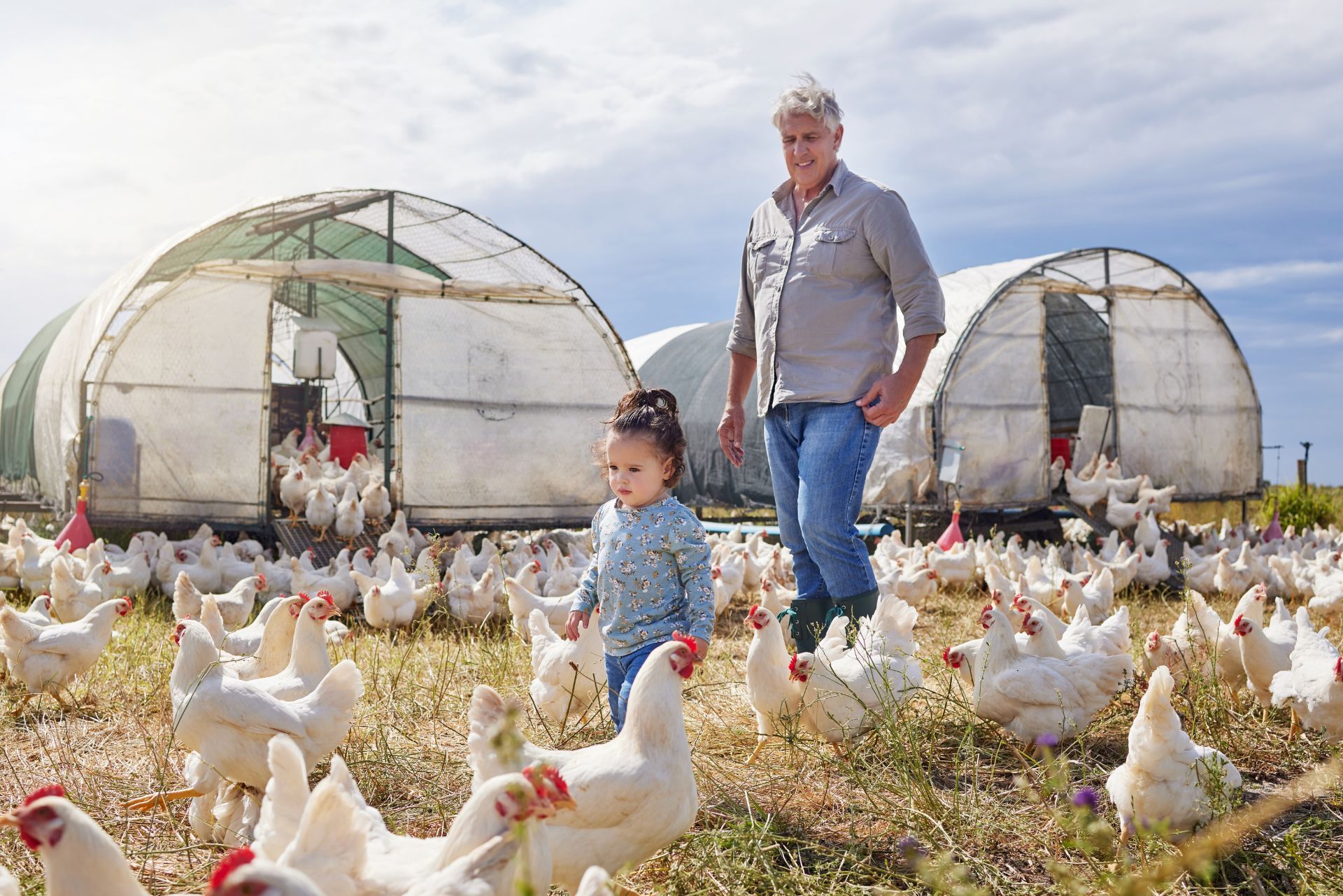Top 3 Recommended Policies
Index
Contact Us
Phone
agency@midwest-insure.com
Location
Northwood, OH
3310 Woodville Road, Suite D
Northwood, OH 43619
Elmore, OH
361 Rice Street
Elmore, OH 43416
Farming and agribusiness in Ohio face a unique set of challenges, from unpredictable weather events to fluctuating market conditions. Protecting your livelihood through comprehensive insurance coverage is more critical than ever. Yet, a surprising 65% of farmers nationwide lack a formal risk management plan, leaving many vulnerable to significant financial losses (Ohio Farm Bureau).
This article provides an in-depth look at the current landscape of farm and agribusiness insurance in Ohio, exploring why risk management is essential, the types of coverage available, recent industry trends, and expert insights to help you make informed decisions.
Understanding the Importance of Risk Management in Ohio Agriculture
Agriculture is inherently risky, with factors like extreme weather, market volatility, and disease outbreaks posing constant threats. According to a recent study, over 80% of farmers have faced extreme weather events, with average losses exceeding $250,000 per incident (Ohio Farm Bureau). Despite this, many farmers do not have formal plans to mitigate these risks.
Laramie Sandquist, Senior AVP at Nationwide Agribusiness Risk Management, emphasizes the need for a forward-looking approach: "Farmers and ranchers should think about what risks could impact them five years from now" (Ohio Ag Connection). This mindset encourages proactive planning rather than reactive crisis management.
For Ohio farmers, developing a comprehensive risk management plan means not only protecting physical assets but also safeguarding income streams and ensuring business continuity. Insurance plays a pivotal role in this strategy, offering financial security against unpredictable events.
Moreover, risk management extends beyond just financial safeguards; it encompasses a holistic approach to farm operations. This includes diversifying crops to mitigate the impact of market fluctuations and investing in technology that can enhance crop resilience against climate change. For example, precision agriculture tools can help farmers monitor soil health and optimize water usage, ultimately leading to more sustainable practices. By adopting such innovations, farmers not only protect their investments but also contribute to a more resilient agricultural ecosystem.
Furthermore, collaboration within the agricultural community can enhance risk management efforts. Local cooperatives and agricultural extension services often provide resources and training that equip farmers with the knowledge they need to assess risks effectively. Networking with peers can also foster the sharing of best practices and strategies that have proven successful in similar situations. This collective approach not only strengthens individual farms but also fortifies the agricultural sector as a whole, ensuring that Ohio remains a competitive player in the national market.

Types of Farm and Agribusiness Insurance Coverage
Ohio’s agricultural sector requires a range of insurance products tailored to its diverse operations. Here are some of the most common types of coverage:
Crop Insurance
Crop insurance protects against losses caused by natural disasters such as drought, floods, hail, and pests. Index-based crop insurance, which uses satellite data and weather indexes, is gaining popularity. However, recent research warns that new satellite sensors may introduce biases in estimating basis risk, potentially affecting payouts (arXiv study). Moreover, farmers are increasingly encouraged to explore multi-peril crop insurance (MPCI), which offers comprehensive coverage against a variety of risks, providing a safety net that can be crucial during unpredictable weather patterns. As climate change continues to impact agricultural productivity, understanding the nuances of these policies becomes essential for farmers aiming to safeguard their livelihoods.
Livestock and Animal Product Insurance
With insured liability for animals and animal products increasing 26-fold from 2018 to 2023, this area has seen rapid growth (farmdoc daily). Coverage can protect against disease outbreaks, theft, and accidents, which are critical for maintaining herd health and farm profitability. Additionally, specialized insurance products are emerging to cover specific livestock sectors, such as dairy or poultry, which face unique risks. This trend reflects a growing recognition of the importance of tailored insurance solutions that address the specific needs of various animal husbandry practices, ensuring that farmers can recover quickly from unexpected losses.
Property and Equipment Insurance
Farm buildings, machinery, and equipment represent significant investments. Property insurance shields these assets from damage caused by fire, storms, or vandalism. However, agricultural property insurance rates are expected to rise due to recent catastrophic weather events, making it essential to review policies regularly (Alera Group, Inc.). Furthermore, many farmers are opting for comprehensive coverage that includes business interruption insurance, which can provide financial support during periods when operations are halted due to damage. This proactive approach not only protects physical assets but also ensures that farmers can maintain their cash flow during challenging times.
Liability Insurance
Liability coverage protects farmers against claims related to bodily injury or property damage caused by their operations. This is especially important given the increasing legal complexities in agribusiness. As farms diversify into agritourism and direct-to-consumer sales, the potential for liability claims grows, making it crucial for farmers to understand the specific risks associated with these new ventures. Additionally, many insurance providers are now offering tailored liability packages that include coverage for events, farm tours, and product liability, ensuring that farmers are adequately protected as they expand their business models.
Emerging Trends in Agribusiness Insurance
The agricultural insurance industry is evolving rapidly, driven by technological advancements and shifting risk profiles. As climate change continues to impact farming practices and crop yields, the need for innovative insurance solutions has never been more pressing. Farmers are increasingly seeking policies that not only protect their investments but also adapt to the dynamic nature of agricultural production.
Artificial Intelligence in Underwriting
Insurers have been early adopters of artificial intelligence, which is now extensively used in underwriting and pricing farm accounts. Scott Tuxbury, EVP of Mountain States at XPT Specialty, notes that AI helps in assessing risk more accurately and efficiently, ultimately benefiting both insurers and farmers (Insurance Journal). By analyzing vast datasets, AI can identify patterns and predict potential losses, allowing for more tailored insurance products that meet individual farm needs. This technology not only streamlines the underwriting process but also enhances the overall customer experience, as farmers receive quicker quotes and more relevant coverage options.
Legislative Advocacy and Support
Recognizing the critical role of risk management, agricultural leaders have been lobbying for enhanced programs during U.S. House farm bill hearings. These efforts aim to improve access to affordable insurance and expand coverage options for farmers nationwide
(Ohio Capital Journal). The push for legislative reforms is not just about securing better rates; it also encompasses the need for comprehensive education on risk management strategies. Farmers are increasingly encouraged to engage with insurance providers to understand the nuances of their policies, which can significantly affect their financial stability in times of crisis. Moreover, these advocacy efforts highlight the importance of collaboration between government agencies and private insurers to create a more resilient agricultural sector.
How to Build a Robust Risk Management Plan
Creating an effective risk management plan involves several key steps:
Assess Your Risks
Identify the specific risks your farm or agribusiness faces, including weather-related threats, market fluctuations, and operational hazards. Consider both short-term and long-term challenges. For example, extreme weather events like droughts or floods can drastically impact crop yields, while shifts in consumer demand can affect market prices. Engaging with local agricultural extension services can provide valuable insights into regional risks and help you stay informed about emerging threats.
Evaluate Insurance Options
Work with a knowledgeable insurance agent to explore policies that fit your needs. Ensure you understand coverage limits, deductibles, and exclusions. Additionally, consider specialized insurance products such as crop insurance or livestock coverage that can provide tailored protection against specific risks. It’s also wise to compare multiple providers and policies to ensure you are getting the best value for your investment, as the right insurance can be a crucial safety net during challenging times.
Incorporate Technology and Data
Leverage tools such as satellite monitoring and AI-driven analytics to gain better insights into risk exposure and improve decision-making. Utilizing precision agriculture technologies can help you monitor soil health, predict pest outbreaks, and optimize resource allocation, ultimately leading to more resilient farming practices. Furthermore, data analytics can assist in forecasting market trends, enabling you to make informed decisions about planting and harvesting schedules.
Review and Update Regularly
Farming conditions and risks evolve, so revisit your plan annually or after significant events to keep your coverage aligned with your current situation. Regularly engaging with your team and stakeholders can also provide fresh perspectives on potential risks and strategies for mitigation. Consider conducting scenario planning exercises to prepare for various risk scenarios, ensuring that your team is well-equipped to respond effectively to unexpected challenges.

Conclusion: Protecting Ohio’s Agricultural Future
Ohio’s farmers and agribusinesses operate in an environment fraught with uncertainty. With rising property insurance rates and increasing exposure to extreme weather, having a comprehensive and forward-thinking insurance strategy is essential. The fact that 65% of farmers lack formal risk management plans highlights a significant gap that needs addressing to ensure the sustainability of this vital industry (Ohio Farm Bureau).
By understanding the types of insurance available, embracing technological advancements, and engaging in proactive planning, Ohio’s agricultural community can better safeguard their operations against the uncertainties ahead. Staying informed and prepared is the best defense against the risks inherent in farming and agribusiness today.




